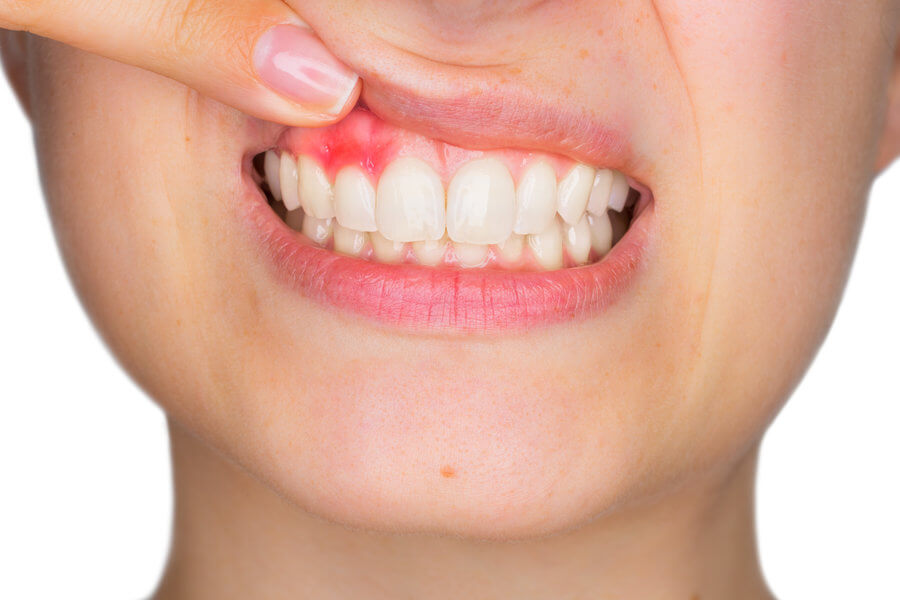Table of Contents
ToggleAre you aware that your gum health plays a crucial role in maintaining overall oral hygiene? Gum disease, also known as periodontal disease, is a common dental condition that affects millions of people worldwide. It may start with mild symptoms but can escalate into a serious and potentially irreversible problem if left untreated. In this blog post, we will explore the importance of early detection when it comes to gum disease and discuss how you can spot the signs before they become more severe. So grab your toothbrush and let’s dive into the world of gum disease!
What is Gum Disease?
Gum disease, also known as periodontal disease, is an infection of the tissues that surround and support your teeth. It is primarily caused by poor oral hygiene habits that allow plaque to build up on the teeth and gums. Plaque is a sticky film of bacteria that forms on the surface of teeth throughout the day.
When plaque isn’t removed through regular brushing and flossing, it can harden into tartar or calculus. Tartar can irritate the gums and lead to inflammation, which marks the beginning stage of gum disease called gingivitis.
If left untreated, gingivitis can progress into more advanced stages of gum disease known as periodontitis. At this point, the infection spreads below the gum line and starts to destroy the supporting structures for your teeth.
The consequences of untreated gum disease are not limited to oral health issues alone. Research has shown that there may be links between gum disease and other systemic conditions such as heart disease, diabetes, respiratory problems, and certain types of cancer.
Regular dental check-ups are essential in detecting early signs of gum disease so that appropriate treatment measures can be taken. By maintaining good oral hygiene practices at home such as brushing twice daily with fluoride toothpaste and flossing regularly along with professional cleanings by your dentist or hygienist every six months will significantly reduce your risk for developing gum diseases
Causes of Gum Disease
Gum disease, also known as periodontal disease, is a common oral health condition that affects the gums and tissues surrounding the teeth. While poor dental hygiene plays a significant role in its development, there are several other factors that can contribute to the onset of gum disease.
One of the primary causes is plaque buildup. When bacteria in our mouths combine with food particles and saliva, they form a sticky film called plaque. If not properly removed through regular brushing and flossing, this plaque can harden into tartar, which irritates the gums and leads to inflammation.
Smoking is another major risk factor for gum disease. The chemicals found in tobacco products weaken the immune system’s ability to fight off infections, making smokers more susceptible to developing gum problems.
Hormonal changes during pregnancy or menopause can also increase the likelihood of gum disease. Fluctuations in hormone levels can make gums more sensitive and prone to inflammation.
Certain medical conditions such as diabetes or HIV/AIDS may compromise the body’s immune system response, making it harder for your body to ward off infections like gum disease.
Genetics can play a role in determining an individual’s susceptibility to gum disease. If you have a family history of periodontal issues, you may be at higher risk yourself.
Understanding these potential causes allows us to take proactive steps towards prevention and early detection of gum disease. By maintaining good oral hygiene practices and addressing any underlying health conditions or lifestyle habits that could exacerbate this condition, we can help protect our gums from damage.
Stages of Gum Disease
Gum disease, also known as periodontal disease, is a progressive condition that can develop in several stages. Understanding these stages is crucial for early detection and intervention.
The first stage of gum disease is gingivitis. It occurs when plaque buildup along the gumline leads to inflammation and irritation. Common signs include redness, swelling, and bleeding gums while brushing or flossing.
If left untreated, gingivitis can progress to the next stage known as periodontitis. During this phase, the infection spreads below the gumline and causes damage to the bone supporting your teeth. Symptoms may include persistent bad breath, receding gums, tooth sensitivity, and even loose teeth.
In advanced cases of gum disease called advanced periodontitis,the supporting structures are severely damaged leading to tooth loss. This stage requires immediate attention from a dental professional who will determine appropriate treatment options such as scaling and root planing or surgical interventions like flap surgery or bone grafts.
Regular dental visits and proper oral hygiene practices are essential in preventing gum disease from progressing beyond its initial stages. Taking action at an early stage can make a significant difference in preserving your oral health for years to come.
Signs and Symptoms to Look Out For
When it comes to gum disease, early detection can make all the difference in preventing further damage. By knowing the signs and symptoms to look out for, you can take action before the condition worsens.
One of the most common signs of gum disease is persistent bad breath. If you find that no matter how often you brush your teeth or use mouthwash, your breath still has an unpleasant odor, it could be a sign of gum disease.
Another symptom to watch for is bleeding gums. If your gums bleed easily when brushing or flossing, this could indicate inflammation and infection. Pay attention if you notice any changes in the color or texture of your gums as well.
Gum recession is another telltale sign of gum disease. If you start noticing that your teeth appear longer than they used to or that there are gaps forming between them, it’s time to schedule a dental visit.
In some cases, individuals with gum disease may experience tooth sensitivity or pain when biting down on food. Additionally, loose teeth or a change in their alignment can also be indicative of advanced stages of gum disease.
Remember that not everyone experiences these symptoms in the same way, so it’s important to pay attention to any changes occurring in your oral health and seek professional advice if needed. Early intervention can save both your smile and overall oral health!
Stay tuned for our next blog section where we’ll dive into the importance of early detection!
Importance of Early Detection
Detecting gum disease in its early stages is crucial for maintaining good oral health. The earlier it is caught, the easier it is to treat and prevent further damage. Ignoring the signs of gum disease can lead to more serious complications down the line, such as tooth loss or even systemic health issues.
One of the main reasons why early detection is important is because gum disease often starts with subtle symptoms that may be easily overlooked. These symptoms include red and swollen gums, bleeding while brushing or flossing, persistent bad breath, and receding gums. By paying attention to these warning signs and seeking prompt dental care, you can prevent the progression of gum disease before it becomes severe.
Early detection also allows for less invasive treatment options. In the early stages of gum disease (known as gingivitis), a thorough professional cleaning along with improved oral hygiene practices at home may be sufficient to reverse the condition. However, if left untreated and allowed to progress into periodontitis (advanced gum disease), more aggressive treatments such as scaling and root planing or even surgery may be necessary.
Moreover, detecting gum disease early on can help protect your overall health. Research has shown a link between periodontal diseases like gum disease and certain systemic conditions such as heart disease, diabetes, respiratory infections, and premature birth in pregnant women. By addressing gum disease promptly through early detection, you can reduce your risk of developing these associated health problems.
Regular visits to your dentist are essential for spotting any signs of trouble before they worsen. Dentists have specialized tools and expertise that allow them to identify even minor indicators of dental issues like gingivitis. They will perform a comprehensive examination of your mouth during routine check-ups which includes checking for signs of inflammation or infection in your gums.
Prevention and Treatment Options
When it comes to gum disease, prevention is key. Taking care of your oral hygiene can go a long way in preventing the onset of this condition. Regular brushing and flossing, along with using antimicrobial mouthwashes, can help remove plaque and bacteria that lead to gum disease.
Additionally, visiting your dentist for regular check-ups is crucial. Dentists can identify early signs of gum disease and provide appropriate treatment options. Professional cleanings are also essential in removing hardened plaque called tartar that cannot be removed by regular brushing alone.
If you do develop gum disease, there are several treatment options available. The type of treatment recommended will depend on the stage and severity of the condition. In its early stages, known as gingivitis, non-surgical methods such as deep cleaning or scaling and root planing may be sufficient.
However, if the gum disease has progressed to periodontitis where there is damage to the bone supporting teeth, more advanced treatments like surgery or laser therapy may be necessary.
It’s important to note that treating gum disease requires not only addressing the symptoms but also adopting proper oral hygiene practices moving forward. Your dentist will provide guidance on how best to prevent a recurrence through ongoing maintenance plans tailored to your specific needs.
Remember, early detection and timely intervention are vital when it comes to managing gum disease effectively! So take charge of your oral health today by practicing good dental care habits and seeking professional help whenever needed.
Conclusion
The importance of early detection when it comes to gum disease cannot be overstated. By being aware of the signs and symptoms, you can take proactive steps to prevent further damage and seek treatment before it becomes more serious.
Remember, gum disease is a common condition that affects many people. It is not something to be ignored or brushed aside. By understanding its causes, stages, and signs, you can empower yourself with knowledge and take control of your oral health.
Make sure to maintain good oral hygiene practices such as regular brushing and flossing, visiting your dentist for check-ups and cleanings at least twice a year, and seeking professional treatment if any signs of gum disease arise.
By taking these preventive measures and addressing any issues promptly, you can protect your gums from further damage and preserve your overall dental health. Don’t wait until it’s too late – prioritize the health of your gums today!
Remember: prevention is always better than cure when it comes to gum disease treatment!




